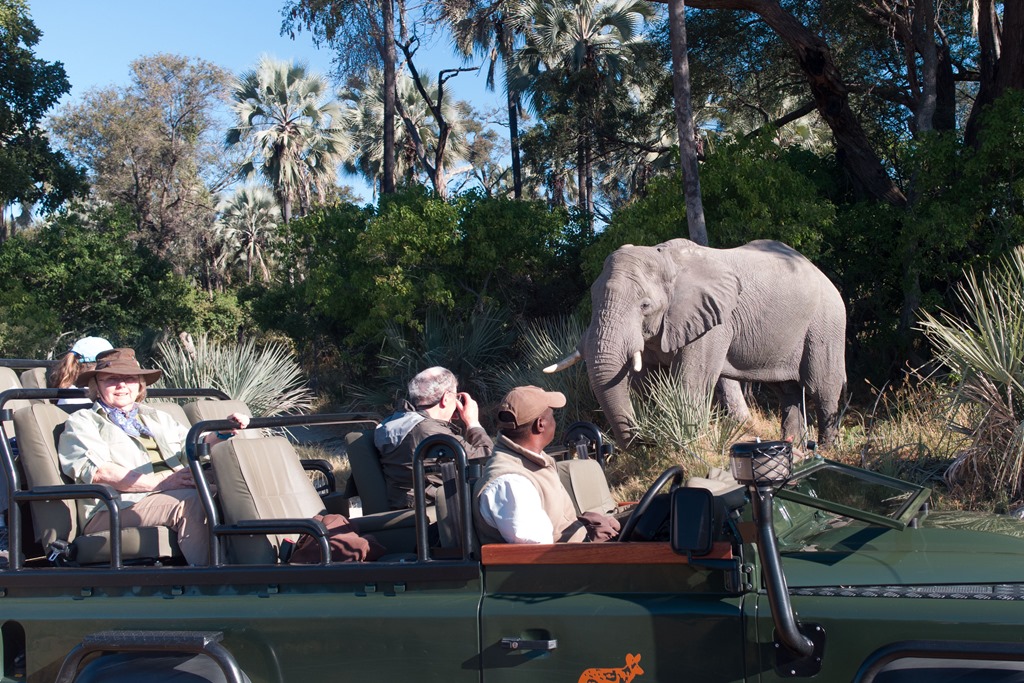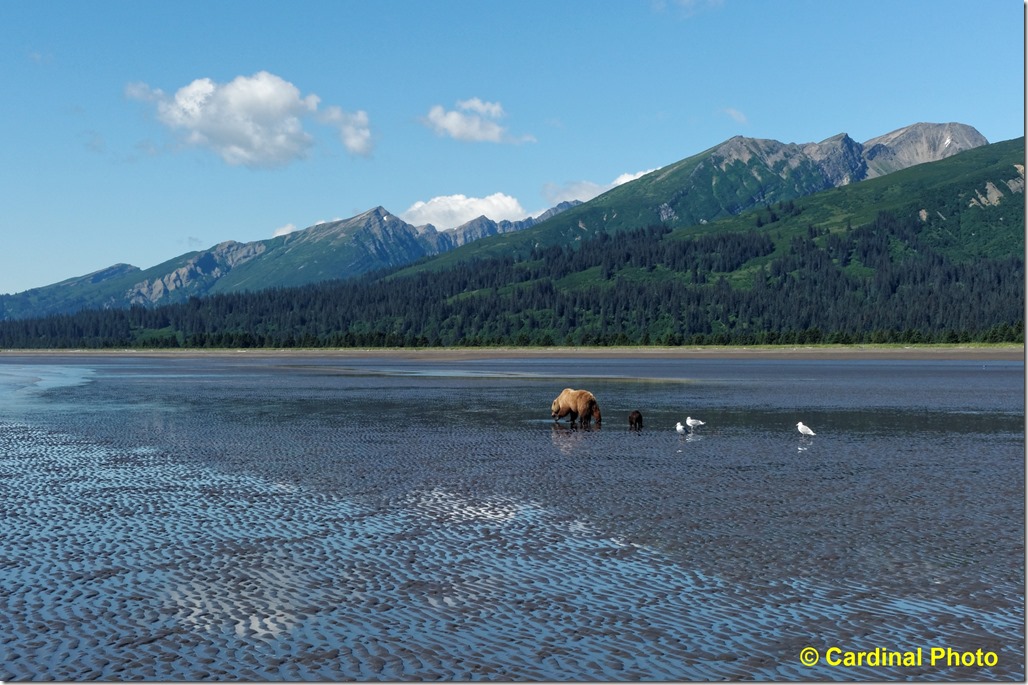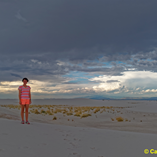- Photo Safaris
- Alaska Bears & Puffins World's best Alaskan Coastal Brown Bear photo experience. Small group size, idyllic location, deluxe lodging, and Puffins!
- Participant Guestbook & Testimonials Candid Feedback from our participants over the years from our photo safaris, tours and workshops. We don't think there is any better way to evaluate a possible trip or workshop than to find out what others thought.
- Custom Photo Tours, Safaris and Personal Instruction Over the years we've found that many of our clients & friends want to participate in one of our trips but the dates we've scheduled just don't work for them or they'd like a customized trip for their family or friends.
- Myanmar (Burma) Photo Tour Myanmar (Burma) Photo Tour December 2017 -- with Angkor Wat option
- Reviews Go hands-on
- Camera Reviews Hands-on with our favorite cameras
- Lens reviews Lenses tested
- Photo Accessories Reviews Reviews of useful Photo and Camera Accessories of interest to our readers
- Useful Tools & Gadgets Handy tools and gadgets we've found useful or essential in our work and want to share with you.
- What's In My Camera Bag The gear David Cardinal shoots with in the field and recommends, including bags and tools, and why
- Articles About photography
- Getting Started Some photography basics
- Travel photography lesson 1: Learning your camera Top skills you should learn before heading off on a trip
- Choosing a Colorspace Picking the right colorspace is essential for a proper workflow. We walk you through your options.
- Understanding Dynamic Range Understanding Dynamic Range
- Landscape Photography Tips from Yosemite Landscape Photography, It's All About Contrast
- Introduction to Shooting Raw Introduction to Raw Files and Raw Conversion by Dave Ryan
- Using Curves by Mike Russell Using Curves
- Copyright Registration Made Easy Copyright Registration Made Easy
- Guide to Image Resizing A Photographers' Guide to Image Resizing
- CCD Cleaning by Moose Peterson CCD Cleaning by Moose Peterson
- Profiling Your Printer Profiling Your Printer
- White Balance by Moose Peterson White Balance -- Are You RGB Savvy by Moose Peterson
- Photo Tips and Techniques Quick tips and pro tricks and techniques to rapidly improve your photography
- News Photo industry and related news and reviews from around the Internet, including from dpreview and CNET
- Getting Started Some photography basics
- Resources On the web
- My Camera Bag--What I Shoot With and Why The photo gear, travel equipment, clothing, bags and accessories that I shoot with and use and why.
- Datacolor Experts Blog Color gurus, including our own David Cardinal
- Amazon Affiliate Purchases made through this link help support our site and cost you absolutely nothing. Give it a try!
- Forums User to user
- Think Tank Photo Bags Intelligently designed photo bags that I love & rely on!
- Rent Lenses & Cameras Borrowlenses does a great job of providing timely services at a great price.
- Travel Insurance With the high cost of trips and possibility of medical issues abroad trip insurance is a must for peace of mind for overseas trips in particular.
- Moose Peterson's Site There isn't much that Moose doesn't know about nature and wildlife photography. You can't learn from anyone better.
- Journeys Unforgettable Africa Journeys Unforgettable -- Awesome African safari organizers. Let them know we sent you!
- Agoda International discounted hotel booking through Agoda
- Cardinal Photo Products on Zazzle A fun selection of great gift products made from a few of our favorite images.
- David Tobie's Gallery Innovative & creative art from the guy who knows more about color than nearly anyone else
- Galleries Our favorite images
DxO ONE Field-tested: Amazing images in a tiny package
DxO ONE Field-tested: Amazing images in a tiny package
Submitted by David Cardinal on Tue, 09/01/2015 - 12:35
![1434734130000_IMG_506470[1] 1434734130000_IMG_506470[1]](http://www.cardinalphoto.com/sites/default/files/1434734130000_IMG_506470%5B1%5D_thumb.jpg) For the last couple months I’ve been traveling with both a DxO ONE (that fits in my shirt pocket) and a Sony RX100 IV (that barely fits in a cargo pocket). I’ve had a lot of fun with both cameras. While they have very similar sensors, they are different in almost every other way. Since they are both likely to be popular choices for image lovers looking for the ultimate compact camera, here are my thoughts on the very new ONE (you can read my review of the Sony online), and how it contrasts with a traditional high-end point-and-shoot… #dxoone
For the last couple months I’ve been traveling with both a DxO ONE (that fits in my shirt pocket) and a Sony RX100 IV (that barely fits in a cargo pocket). I’ve had a lot of fun with both cameras. While they have very similar sensors, they are different in almost every other way. Since they are both likely to be popular choices for image lovers looking for the ultimate compact camera, here are my thoughts on the very new ONE (you can read my review of the Sony online), and how it contrasts with a traditional high-end point-and-shoot… #dxoone
DxO ONE: Image Quality beyond its size
 It is hard to believe that the DxO ONE is able to pack a sensor the same size as (and in fact nearly identical to) the one in the much larger Sony RX100 IV. You can see from this comparison photo that it is truly tiny in comparison to the Sony. Even better, its smooth shape makes it a natural to throw into a pants or shirt pocket. Its solid construction and build mean that even after a couple months in remote locations including the bush of southern Africa and the coastal plains of Alaska, the ONE looks, and works, as good as new. Small cameras aren’t new, but the ONE delivers amazing quality images that haven’t ever come from this small a camera before. You can see some of my favorite images in the gallery below, but of course on the web they don’t fully do the camera justice (they’ve all been down-sampled).
It is hard to believe that the DxO ONE is able to pack a sensor the same size as (and in fact nearly identical to) the one in the much larger Sony RX100 IV. You can see from this comparison photo that it is truly tiny in comparison to the Sony. Even better, its smooth shape makes it a natural to throw into a pants or shirt pocket. Its solid construction and build mean that even after a couple months in remote locations including the bush of southern Africa and the coastal plains of Alaska, the ONE looks, and works, as good as new. Small cameras aren’t new, but the ONE delivers amazing quality images that haven’t ever come from this small a camera before. You can see some of my favorite images in the gallery below, but of course on the web they don’t fully do the camera justice (they’ve all been down-sampled).
Quantitatively, the ONE is rated by DxOMark with a sensor score of 70 for RAW (the same as the Sony RX100 IV’s score) and as high as 85 when using DxO’s proprietary SuperRAW mode (which combines four quick captures into one to decrease noise and improve image quality).

The DxO ONE scores the same as the Sony RX100 IV with which it shares a sensor
It does substantially better than the Sony when shooting SuperRAW
My informal testing was completely consistent with these numbers. For available-light shooting, I would have no problem using the DxO ONE to capture images instead of the Sony. In fact, I often grabbed the DxO ONE from my shirt pocket if I wanted to quickly capture a shot (it can be used without an iPhone for quick shots or videos, although of course you lose the viewfinder). The Sony’s built-in flash is stronger than the one on my iPhone, so for indoor shooting it often has an advantage.
The pure camera specs on the ONE are great. It has a shutter that can fire at up to 1/8000s, and an f/1.8 lens. The only real sacrifice in this area is the lack of a zoom (the lens has a fixed focal length of 32mm in full-frame equivalent terms), but the 20MP images are high-enough quality that you can typically do some cropping and still have plenty of resolution left. It can capture video at either 720p (up to 120fps) or 1080p (30fps). I found the video quality excellent – more than on a par with other high-end compact cameras. It doesn’t have a tripod socket, though, so you either need to be very good at hand holding, or use a selfie-style clamp on your iPhone to get truly stable results when shooting in video mode.

Having a DxO ONE in your pocket makes for some great opportunities to capture moments that would otherwise be lost.
Read more about this image
Ergonomics: Size versus Sleekness
 The DxO ONE may be the sleekest, and coolest-looking, camera I’ve ever reviewed. When operated standalone, it features a no-brainer large shutter button on top, and a simple swipe interface for changing between stills and videos. Opening the lens cover turns on the camera. That’s all you need to do besides shoot. Of course, that means that all the more sophisticated operations are done from your iPhone (or iPad). Fortunately, DxO has provided an excellent camera application for iOS. It has a straightforward, but powerful, design that lets you choose between Aperture priority, Shutter priority, Manual, and Automatic. Depending on the mode you can use spinners to change the appropriate exposure settings. You can also switch between Raw, JPEG, or DxO’s unique SuperRAW modes (and obviously between still and video as well). One feature I really like is that you can choose Automatic and still shoot Raw. Far too many compact cameras that support Raw force you to shoot JPEGs when you use their Auto modes. The ONE also has a few of the most useful scene modes – Sports, Landscape, Portrait, and Night.
The DxO ONE may be the sleekest, and coolest-looking, camera I’ve ever reviewed. When operated standalone, it features a no-brainer large shutter button on top, and a simple swipe interface for changing between stills and videos. Opening the lens cover turns on the camera. That’s all you need to do besides shoot. Of course, that means that all the more sophisticated operations are done from your iPhone (or iPad). Fortunately, DxO has provided an excellent camera application for iOS. It has a straightforward, but powerful, design that lets you choose between Aperture priority, Shutter priority, Manual, and Automatic. Depending on the mode you can use spinners to change the appropriate exposure settings. You can also switch between Raw, JPEG, or DxO’s unique SuperRAW modes (and obviously between still and video as well). One feature I really like is that you can choose Automatic and still shoot Raw. Far too many compact cameras that support Raw force you to shoot JPEGs when you use their Auto modes. The ONE also has a few of the most useful scene modes – Sports, Landscape, Portrait, and Night.
Because the ONE clicks into your phone, you don’t need to waste time with the inevitably confusing and sometimes-poorly-implemented WiFi and NFC features of cameras like the Sony. Images are automatically recorded on your iPhone in JPEG-quality for quick sharing, and remain on the ONE’s (not included) micro-SD card for later downloading. DxO is hard at work adding features to the camera through easy-to-install firmware updates, and to its iOS app through the usual Appstore process, so by the time you read this or get a full production unit, there are likely to be even more options for recording and sharing your images.
Part of the power of the DxO ONE is its tight integration with DxO’s own image processing software. That starts with its free DxO Connect application – available for MacOS and Windows. While not necessary to transfer images from the camera or card, it provides a friendly interface and acts as a bridge to directly import images into DxO’s Optics Pro 10.5 if desired. One very large benefit of this workflow is that you can truly make use of the image processing power on your computer by shooting Raw – something you can’t do with just an iPhone or iPad.
The DxO ONE connection to your iPhone is very fast, and in my experience, very solid. I’ve read some reviews that are worried about the connection, but after two months of use in some rugged environments (like trucks bouncing over dirt roads, small planes, and boats) I’ve never had a problem with it. Because it swivels you can shoot low (like the sample image of bears from the gallery) or high. It also piggybacks on the iPhone in some clever ways, like using its built-in flash. You will need an iPhone or iPad with a Lightning connector and iOS 8 or better. Unfortunately, Android phones almost all rely on the much weaker microUSB connector, so it is hard to see any easy way for DxO to create a version that works with Android phones until there is a better connectivity strategy (perhaps USB-C?).

I am very impressed by the range of scenes the DxO ONE can capture simply by pointing and shooting
Should you buy a DxO ONE?
The DxO ONE is so unique that it is difficult to directly compare it to other cameras. If you value image quality, design, and portability, and want to move beyond photography with your smartphone, it’s an awesome product. Similarly, if you’d like the pure image quality you get with an interchangeable lens camera, but want to recreate it on your iPhone, it’s the best option on the market. On the flip side, you give up zoom and some of the bells and whistles (like a viewfinder) you find on a high-end compact. The ONE is only at the very beginning of its life, so I expect DxO to continue to release new features for it over the coming months and years. For example, the camera has WiFi hardware already, and DxO is surveying customers for possible ways to implement WiFi capabilities in its firmware and apps. Similarly, the touchscreen on the rear of the camera is capable of much more than it is being used for in its initial release. Personally I’d love to see features like the excellent Panorama mode and built-in HDR from the Sony RX100 IV implemented for the DxO ONE. I’m excited to see what the future will bring for the ONE!
DxO is beginning to fill its pre-release orders for the ONE, and you can now pre-order one from B&H for $599, and likely receive it by October. It is definitely pricey, but at least for now purchasers will receive a free license for DxO’s excellent OpticsPro and FilmPack software. That contrasts with the $948 that the Sony RX100 IV will set you back.
 The perfect cable for your DxO ONE? If you wind up with a DxO ONE, you'll probably want to snag the cool new, versatile, charging cable from TYLT. Called the FLYP-DUO, it features a reversible USB plug for foolproof connections, and more importantly for ONE users, both a Lightning and a microUSB connector on the other end. That means that you can use it not only to charge your iPhone, but to connect to and charge your DxO ONE (or other micro-USB device) without carrying a second cable. You can snag one from Amazong for $29.99. It's now the cable I keep with my laptop at all times.
The perfect cable for your DxO ONE? If you wind up with a DxO ONE, you'll probably want to snag the cool new, versatile, charging cable from TYLT. Called the FLYP-DUO, it features a reversible USB plug for foolproof connections, and more importantly for ONE users, both a Lightning and a microUSB connector on the other end. That means that you can use it not only to charge your iPhone, but to connect to and charge your DxO ONE (or other micro-USB device) without carrying a second cable. You can snag one from Amazong for $29.99. It's now the cable I keep with my laptop at all times.
(You can see some of my sample panoramas taken with the Sony RX100 IV here, and read my first impressions of the DxO ONE here)
Full Specifications
Pixels
20.2 Megapixel
Sensor
1" (13.2 x 8.8 mm) CMOS
File Formats
Still Images: DNG, JPEG, RAW
Movies: H.264, MOV
Max Resolution
20.2 MP: 5406 x 3604
Aspect Ratio
3:2
Image Stabilization
Digital
Lens
EFL: 11.9mm (35 mm equivalent: 32mm)
Aperture: f/1.8 to f/11
Zoom
Digital: 3x
Focus Range
Normal: 7.87" (20 cm) - Infinity
ISO Sensitivity
100-12800 (High Sensitivity Mode: 100-51200)
Shutter
15 - 1/8000 second
Exposure Metering
Center-weighted, Multi, Spot
Exposure Modes
Modes: Aperture Priority, Auto, Manual, Program, Shutter Priority
Shooting Modes
Landscape
Night
Portrait
Self-Portrait
Sports
Memory Card Type
microSD
microSDHC
microSDXC
Video Recording
Yes
Resolution
1920 x 1080p: 30 fps
1280 x 720p: 120 fps
Connectivity/System Requirements
Connectivity
Micro-USB, USB 2.0
Battery
Rechargeable Lithium-Ion Battery Pack
Dimensions (WxHxD)
2.7 x 1.9 x 1.0" / 67.5 x 48.9 x 26.3 mm
Weight
3.81 oz / 108 g
- Log in to post comments

























